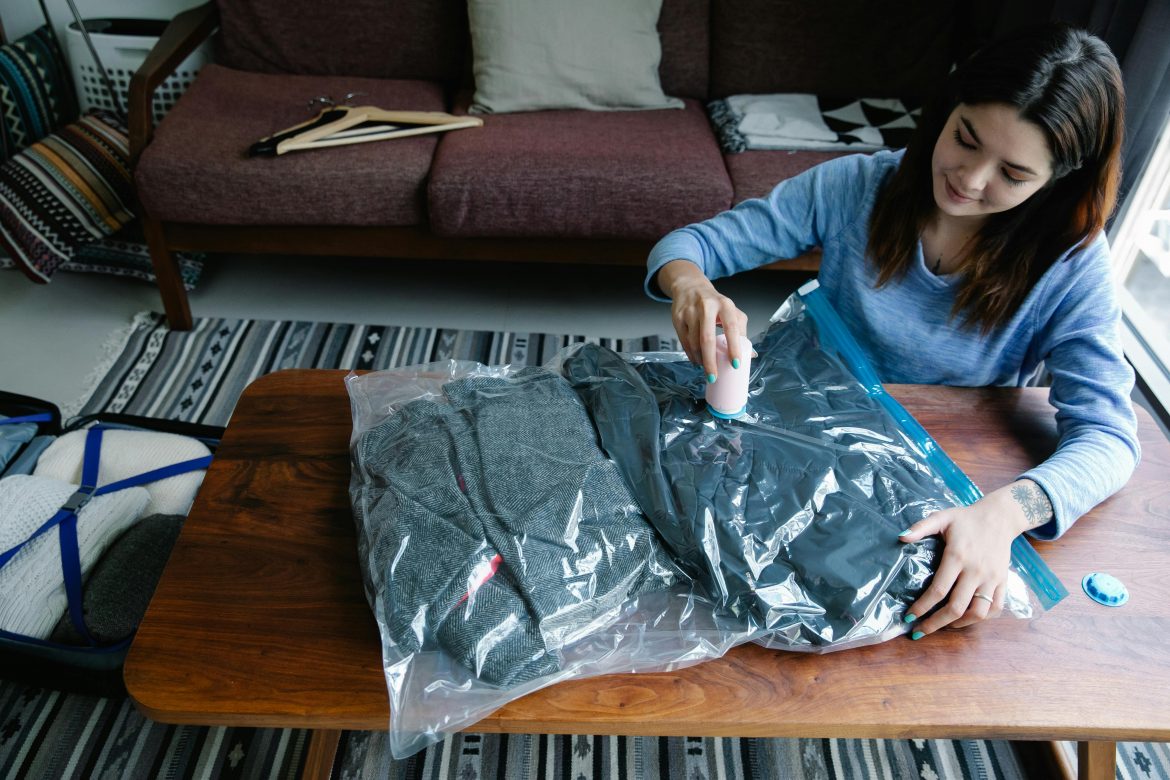As the frosty winds and heavy rains of winter give way to warmer days, it’s time to retire your bulky winter jackets. Before tossing them deep into the back of your closet, there’s more to storing them correctly than simply hanging them up.
Proper storage ensures your jackets stay in great condition, prolonging their life and helping you avoid musty smells or fabric damage when winter rolls around again. Here are 7 tips for storing your winter jackets correctly:
1. Always clean before you store
Winter jackets, whether down-filled, wool, or synthetic, accumulate dirt, oils, and sweat throughout the cold season. Storing them without cleaning can lead to stains setting in permanently or even attract pests like moths. Depending on the fabric, here’s how to clean your jacket:
- Down jackets: Check the care label, but many down jackets can be machine washed on a gentle cycle with cold water and mild detergent. Use dryer balls when drying to help fluff the down.
- Wool coats: Wool coats should be dry cleaned before storage. Wool is especially prone to moth damage if not cleaned, as any food or sweat residue can attract them.
- Synthetic jackets: These can often be machine washed. Use a mild detergent and air-dry them to maintain the fabric’s integrity.
2. Repair before storing
Inspect your jackets for any signs of wear and tear. Broken zippers, missing buttons, or small holes should be repaired before storing them away. Small issues like these can worsen if left unchecked, and finding damage at the start of winter can be frustrating.
3. Choose the right storage method
The way you store your jackets matters greatly. Here are some storage tips based on the type of winter jacket:
- Hang wool and leather jackets: Wool and leather coats should be hung on sturdy, wide-shouldered hangers to maintain their shape. Avoid thin wire hangers, which can cause the fabric to stretch or leave awkward creases.
- Fold down jackets: Down jackets can be stored folded in breathable garment bags or clean plastic containers. Avoid compression bags, as long-term compression can damage the down’s loft and insulation.
4. Choose the right storage spot
The environment where you store your winter jackets is critical to their longevity. Keep them in a cool, dry place to prevent mold and mildew growth. Avoid attics or basements that might experience moisture or extreme temperature changes. Here are a few tips for choosing the right spot:
- Avoid direct sunlight: Sunlight can fade colours and weaken fabrics over time.
- Use a dry area: Moisture is a jacket’s worst enemy. Make sure the area is free from dampness to avoid mold and mildew.
- Ventilation matters: Closets with airflow prevent mustiness. If your storage space lacks airflow, consider placing moisture absorbers or cedar blocks to keep things fresh.
5. Use garment bags and storage containers
Once your jackets are clean and dry, consider using garment bags for hanging items or sealed plastic containers for folded jackets. This extra layer of protection prevents dust, dirt, and pests from damaging your clothes.
- For wool coats: Use breathable cotton or linen garment bags. These allow airflow while keeping dust out.
- For down jackets: Place folded jackets in a plastic container with a lid. Ensure the container is clean and dry, and line it with tissue paper for added protection.
6. Add moth protection
Moths can wreak havoc on fabrics like wool and cashmere. To protect your jackets from moth damage, try these simple solutions:
- Cedar blocks or sachets: Cedar naturally repels moths and adds a fresh scent to your stored clothing. You can place cedar blocks or sachets in your closet or storage bins.
- Lavender sachets: Lavender is another natural moth deterrent. Place sachets in the pockets or storage area to keep pests away while adding a pleasant scent.
7. Check periodically
Even with all these precautions, it’s a good idea to check on your stored jackets periodically during the offseason. Make sure there are no signs of moisture, pests, or fabric damage. Doing so can save you from unpleasant surprises when winter arrives again.
ALSO SEE:
Featured Image: Pexels

